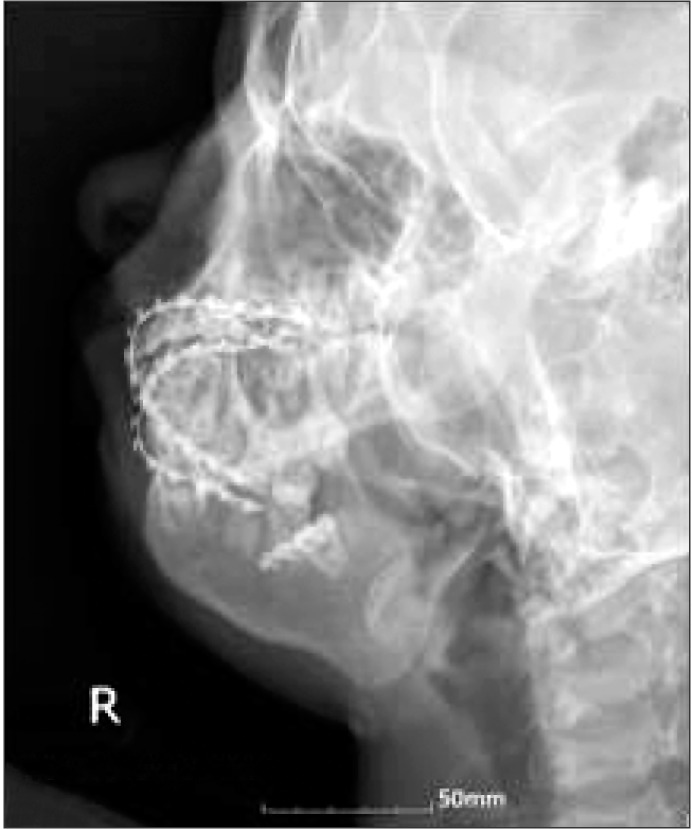J Korean Assoc Oral Maxillofac Surg.
2017 Feb;43(1):37-41. 10.5125/jkaoms.2017.43.1.37.
Evaluation of postoperative complications according to treatment of third molars in mandibular angle fracture
- Affiliations
-
- 1Department of Oral and Maxillofacial Surgery, Inje University Busan Paik Hospital, Busan, Korea. ds5nki@hanmail.net
- KMID: 2385068
- DOI: http://doi.org/10.5125/jkaoms.2017.43.1.37
Abstract
OBJECTIVES
The aim of this study was to evaluate the implication of third molars in postoperative complications of mandibular angle fracture with open reduction and internal fixation (ORIF).
MATERIALS AND METHODS
Data were collected on patients who presented with mandibular angle fracture at our Department of Oral and Maxillofacial Surgery between January 2011 and December 2015. Of the 63 total patients who underwent ORIF and perioperative intermaxillary fixation (IMF) with an arch bar, 49 patients were identified as having third molars in the fracture line and were followed up with until plate removal. The complications of postoperative infection, postoperative nerve injury, bone healing, and changes in occlusion and temporomandibular joint were evaluated and analyzed using statistical methods.
RESULTS
In total, 49 patients had third molars in the fracture line and underwent ORIF surgery and perioperative IMF with an arch bar. The third molar in the fracture line was retained during ORIF in 39 patients. Several patients complained of nerve injury, temporomandibular disorder (TMD), change of occlusion, and postoperative infection around the retained third molar. The third molars were removed during ORIF surgery in 10 patients. Some of these patients complained of nerve injury, but no other complications, such as TMD, change in occlusion, or postoperative infection, were observed. There was no delayed union or nonunion in either of the groups. No statistically significant difference was found between the non-extraction group and the retained teeth group regarding complications after ORIF.
CONCLUSION
If the third molar is partially impacted or completely nonfunctional, likely to be involved in pathologic conditions later in life, or possible to remove with the plate simultaneously, extraction of the third molar in the fracture line should be considered during ORIF surgery of the mandible angle fracture.
Keyword
MeSH Terms
Figure
Reference
-
1. Hanson BP, Cummings P, Rivara FP, John MT. The association of third molars with mandibular angle fractures: a meta-analysis. J Can Dent Assoc. 2004; 70:39–43. PMID: 14709255.2. Al-Moraissi EA, Ellis E 3rd. What method for management of unilateral mandibular angle fractures has the lowest rate of postoperative complications? A systematic review and meta-analysis. J Oral Maxillofac Surg. 2014; 72:2197–2211. PMID: 25236822.3. Patel N, Kim B, Zaid W. A detailed analysis of mandibular angle fractures: epidemiology, patterns, treatments, and outcomes. J Oral Maxillofac Surg. 2016; 74:1792–1799. PMID: 27262184.
Article4. Rajandram RK, Nabil S, Shareif MS, Ishak I, Marhazlinda J, Nordin R, et al. Mandibular third molar and angle of mandible fractures: an unsolved clinical dilemma. Sains Malaysiana. 2013; 42:39–43.5. McNamara Z, Findlay G, O'Rourke P, Batstone M. Removal versus retention of asymptomatic third molars in mandibular angle fractures: a randomized controlled trial. Int J Oral Maxillofac Surg. 2016; 45:571–574. PMID: 26867667.
Article6. Yadavalli G, Mythily PH, Shetty JN. Clinical evaluation of mandibular angle fractures with teeth in fracture line, treated with stable internal fixation. Indian J Stomatol. 2011; 2:216–221.7. Bell RB, Wilson DM. Is the use of arch bars or interdental wire fixation necessary for successful outcomes in the open reduction and internal fixation of mandibular angle fractures? J Oral Maxillofac Surg. 2008; 66:2116–2122. PMID: 18848111.
Article8. Fordyce AM, Lalani Z, Songra AK, Hildreth AJ, Carton AT, Hawkesford JE. Intermaxillary fixation is not usually necessary to reduce mandibular fractures. Br J Oral Maxillofac Surg. 1999; 37:52–57. PMID: 10203223.
Article9. Dimitroulis G. Management of fractured mandibles without the use of intermaxillary wire fixation. J Oral Maxillofac Surg. 2002; 60:1435–1438. PMID: 12465006.
Article10. Kim MY, Kim CH, Han SJ, Lee JH. A comparison of three treatment methods for fractures of the mandibular angle. Int J Oral Maxillofac Surg. 2016; 45:878–883. PMID: 26987694.
Article11. Bhagol A, Shigh V, Singhal R. Management of mandibular fractures. In : Motamedi MHK, editor. A textbook of advanced oral and maxillofacial surgery. 1st ed. Rijeka, Croatia: InTech;2013. p. 385–414.12. Ellis E 3rd, Walker L. Treatment of mandibular angle fractures using two noncompression miniplates. J Oral Maxillofac Surg. 1994; 52:1032–1036. PMID: 8089787.
Article13. Ellis E 3rd. Outcomes of patients with teeth in the line of mandibular angle fractures treated with stable internal fixation. J Oral Maxillofac Surg. 2002; 60:863–865. PMID: 12149727.
Article14. Baltrusaityte A, Surna A, Pileicikiene G, Kubilius R, Gleiznys A, Baltrusaitis M. Dynamical changes of occlusion and articulation during treatment of mandibular angle fractures. Stomatologija. 2013; 15:12–19. PMID: 23732825.15. Pullinger AG, Seligman DA. Trauma history in diagnostic groups of temporomandibular disorders. Oral Surg Oral Med Oral Pathol. 1991; 71:529–534. PMID: 2047090.
Article16. Chaurasia NK, Guan J, Wang X, Sah G. Clinical analysis of changes in function of the temporomandibular joint after open reduction and internal fixation of mandible fracture. Indian J Oral Sci. 2015; 6:60–64.
Article
- Full Text Links
- Actions
-
Cited
- CITED
-
- Close
- Share
- Similar articles
-
- A Correlation between Mandibular Angle Fracture and the Mandibular Third Molar
- The role of mandibular third molar in the mandibular angle fractures
- Comparative Evaluation of Infection Rate according to Extraction of Teeth in the Line of Mandibular Angle Fractures Treated with Stable Internal Fixation
- A Clinical Study of Mandibular Angle Fracture
- Relationship between mandible fractures and third molars



